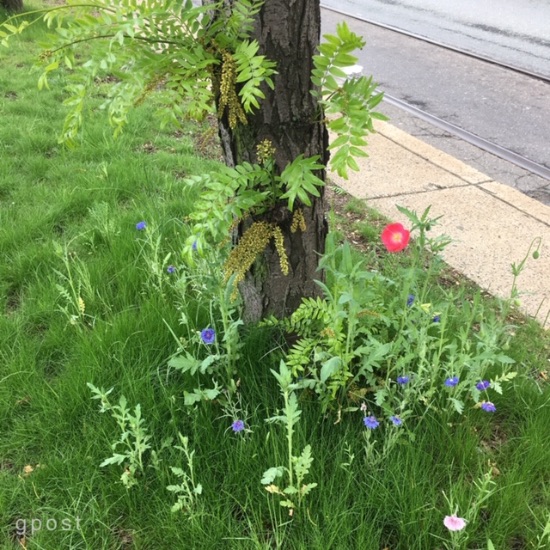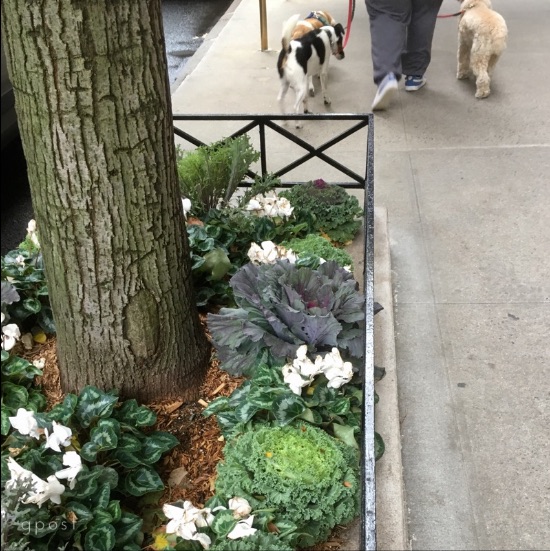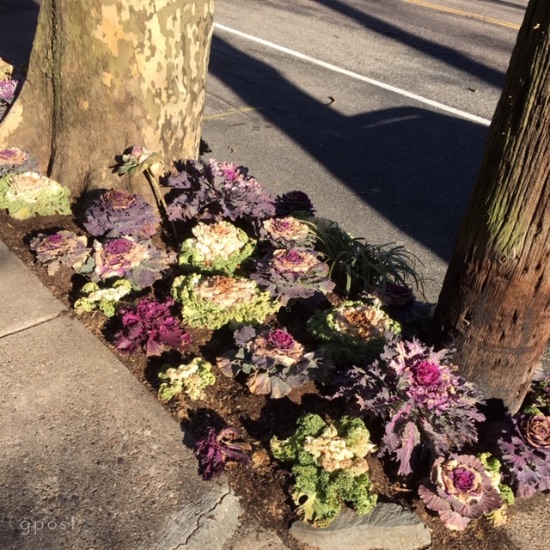
I’m somewhere between anger and resignation, sadness and fear these days because the quality of almost every “public good” that we share as Americans seems to be declining in quality faster than the public’s servants can process erosions like these, let alone address them.
By the public’s servants, I’m not talking about government workers whose jobs are to maintain and improve our communities. No, it’s the members of our communities—the folks that JFK had in mind when he observed: “Ask not what your country can do for you.” The rest of us also have personal stakes in the quality of the streets we walk on, the governments we elect, the markets that build our wealth, and the political debates we have with one another. These days, fewer of us seem to be bearing those responsibilities, and those who continue to do so can easilly despair given the extent of the challenge.
No bureaucracy will ever be large enough to do the work of a public that no longer feels these stakes or finds them too daunting to bear.
There are many examples of course, but I’m thinking this morning about the the kinds of quality-of-life “crimes” that riled a New York City Police Commissioner 25 years ago, and that persist to this day just outside my door.
For almost my entire life, I’ve lived, worked or gone to school a few blocks from Route One. Both proximity and congestion on this Maine-to-Florida roadway always had me thinking about the public (and semi-public) spaces that we’ve carved out for ourselves along the expanse of it. It’s also let me observe the sad path from neglect to disrepair of these shared spaces, with self-interest (and its debris) trumping the public’s interest at nearly every turn.
For instance, almost daily I see its casual evidence on the grassy strip between sidewalk and street in front of my house.
I live one-house-down from a small intersection and traffic light, which has come to mean a daily tide of discarded water bottles, fast food wrappers, and similar rubbish washing up on my strip of green from the stream of passers-by. Since my neighbor at the corner rarely picks up her yard, the downward sweep of traffic also brings much of “her” litter my way before too long. During the pandemic, when I complained on this page about regularly picking up discarded underwear, used Kleenex and rubber gloves, one of you gifted me with a trash-picker so I no longer had to think about touching it.
My much-maligned strip is a semi-public space. The City owns the trees, the energy and communications providers their rights-of-way. Anyone is free to stop or park along the curb. For all that public access, I get to mow the grass and maintain “our curb appeal.” Driver and pedestrian disregard has always been an irritant, but over the past 20 years the mess that’s left in their wake has become a daily chore.
Jedediah Purdy foresaw these quality-of-life and broader erosions of our public goods in 1999’s For Common Things: Irony, Trust and Commitment in America Today. In the course of his provocative book, he describes what he means as “the commons of public life” from two different angles. On the one hand, it consists of:
“the things that affect us all, and [that] we can only preserve or neglect together. In the end, they cannot be had alone.”
But at the same time, it is:
[a] good deal of what we value most, whether openly or in silence, meaning…the things we cannot avoid having in common, and whose maintenance or neglect implicates us all.
The commons is a roadside or park. It is a communications medium like the internet or the evening news. In a democracy like ours, it is the gears of governance and decision-making. We hold such things “in common,” Purdy argues, whether we acknowledge our ownership and our responsibilities as owners or not.
He also mentions what ecologist Garrett Hardin once called “the tragedy of the commons” or the consequence of the public’s exercising freedoms that come with common ownership but not their responsibilities.
According to Hardin, self-interest often causes those with access to the commons to take as much as possible, such as overgrazing or clearing forests, before others [who are similarly motivated] can do the same…. What is taken is not renewed, and soon the commons are exhausted….[But] the laws of self-interest that move Hardin’s analysis are not laws at all. Instead, the tragedy is a cultural and ethical event. It takes place only when we join self-interest with mutual indifference.
How do we rise to our common duties? Purdy’s response: “Just by living in the world, just by caring for things, we take on a responsibility for the world’s well-being.”
Will our care be enough to over-come the tragedies that degrade it? His response is much the same: “The question is not whether to hope” that our common things will be maintained, repaired or even improved “but whether to acknowledge our hope, to make it our own.”
The common areas around trees on the Upper East Side of New York and somewhat less grandly (but more accessibly) a few streets over in my neighborhood.
Where the commons are concerned, things always come to a head when there is not enough of a common good that people prize. Such is the case with “green space” in cities like New York or Philadelphia, and for my interest in a recent Times article called “In the Fight Over N.Y.C. Sidewalks, Tree Beds Are the Smallest Frontier.” (Here’s a paywall-free link.) When the surface-level green on a street is as small as its tree-beds, who gets to decide how this shared and common space gets used?
Street trees provide shade in the summer and lower ambient temperatures while producing oxygen and absorbing CO2 year-round, so the Parks Department (which has jurisdiction for maintaining New York City’s) has been enlarging tree beds to allow roots to spread and to drink in more storm water. Formerly no more than 5 by 5 feet in size, they now can be 5 or even 10 feet longer. That means these tree-centered areas have been expanding. As of today:
Over 660,000 trees line the streets of New York City, and the beds around them take up more than 400 acres, according to a city estimate. While many people just walk by the rectangular openings in the sidewalk from which the trees spring — or, worse, use the spaces as trash cans— others lay claim, unofficially, to these pocket-size patches of land for their own uses.
“As the weather warms, these caretakers swing into action.
“They plant flowers, post signs to ward off dog owners, and fashion fences from broomsticks, linoleum tiles and old skateboards. Some create mini memorials to departed loved ones.
“It all makes sense. In a concrete jungle where few residents have yards, the tiny parcels offer New Yorkers a rare chance to dig into the soil, connect with nature and make something beautiful grow.
Moreover, weekend gardeners (and their admirers) aren’t to only ones who want to benefit from these common spaces. Tree advocates argue that barriers about tree beds block rain from flowing off the sidewalk and reaching the tree’s roots, while placing too much soil in a concrete or brick “container” around a tree’s trunk can cause the bark to rot and lead to disease.
Not surprisingly, dog owners have their own perspectives. The Times article mentions that a local dog owner ripped out a picket fence that had been erected around a tree bed “to make it easier for his dog to do its business,” noting (with some satisfaction) that he was “hauled into court” shortly thereafter. The writer also observes how “[p]ooch pee and poop, it must be said, can harm plants, not to mention create hazards for those who work the soil.”
But having spent time with a dog in New York, I was often at a loss while searching for the necessary bare (though fragrant) ground that Rudy (at the time) or other City dogs would find appealing during walks. Maintenance and improvement of common areas amidst the concrete could also dictate tree-free but open stretches that dog owners (in turn) might maintain, including the relatively-modest provision of poop bags to all comers, a can to dispose of the waste, and an arrangement with the Parks Department to empty them regularly.
When users become owners–transforming the hope that these common places will be maintained and repaired into their hope–it’s possible for competing needs to be accommodated, for the beneficial sharing of common resources to become a reality, and for communities to strengthen.

Wild flowers that I noticed somebody had planted in a West Philadelphia median strip, maybe as their own expression of hope for this public space.
As I write this post, I notice that today’s newspaper includes two more stories where public neglect and private self-interest have been sullying—more than any dog could—other features of the American commons. One story was about a cheating scandal affecting a Little League baseball team in suburban Washington D.C. where the player’s prominent and powerful parents may have had more of an incentive to see their kids win than was good for anyone concerned.
Another story involves the misuse of America’s financial markets to raise billions of dollars for a politically-connected company with little track record, deep losses and principals who have utilized the public stock offering process unsuccessfully before. Marketing this so-called “meme stock” seeks profit with no fundamentals and, while technically legal, makes a mockery out of performance-based attempts to secure public financing though stock offerings on a national exchange. At a time when the U.S. economy’s success is the envy of the world, its guardians (like my bosses at the SEC) should be far more aggressive than they’ve been in deterring questionable use of the public-offering process.
Neither of these stories recounts “somebody else’s problems.” Little League baseball and the nation’s stock markets—along with the hopes that we invest in them—belong to us all.
Unfortunately, instead of re-claiming this hope too many of us (including me) fall into resignation and withdrawal from public life because the challenges facing the commons I benefit from too can feel overwhelming.
The antidote is reclaiming our ownership over the parts of our public lives that are most important to us, perhaps starting with the most proximate ones. If it’s trash between the sidewalk and street in front of your house, then clean it up as part of your gratitude for living in a beautiful neighborhood that you hope will remain beautiful, and stop grousing about it. (There may also comfort in the fact that clean sidewalks invite less future trash than already littered ones.)
Is it the use of tree-beds on City streets? The quality of the conversations on social media? Opposing bias and propaganda in the local news. Whatever it is, we can put our stakes down and clarify (at least to ourselves) why we’ve done so in this valued part of our public lives.
It could transform our dread about an impoverished future into something that includes (in our actions) a small engine of hope about the repairs we’ve begun.
+ + +
On a related note, I briefly profiled an excellent New Yorker essay called “The Theft of the Commons” in an earlier post. Among other things, its arguments have implications for currently unclaimed parts of the oceans, the Arctic and Antarctic, and nearly every aspect of outer space.
This post was adapted from my March 24, 2024 newsletter. Newsletters are delivered to subscribers’ in-boxes every Sunday morning, and sometimes I post the content from one of them here. You can subscribe (and not miss any) by leaving your email address in the column to the right.















